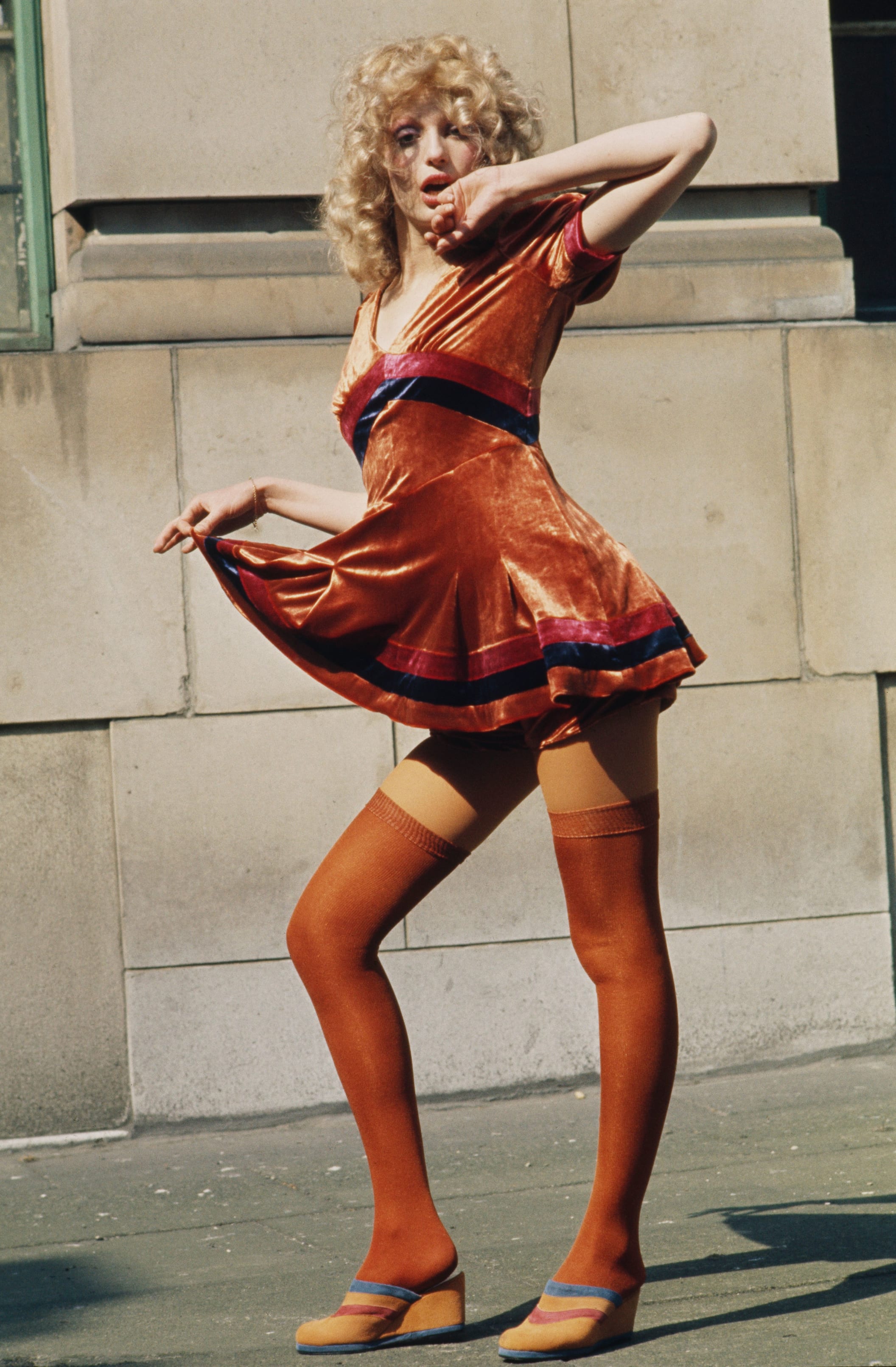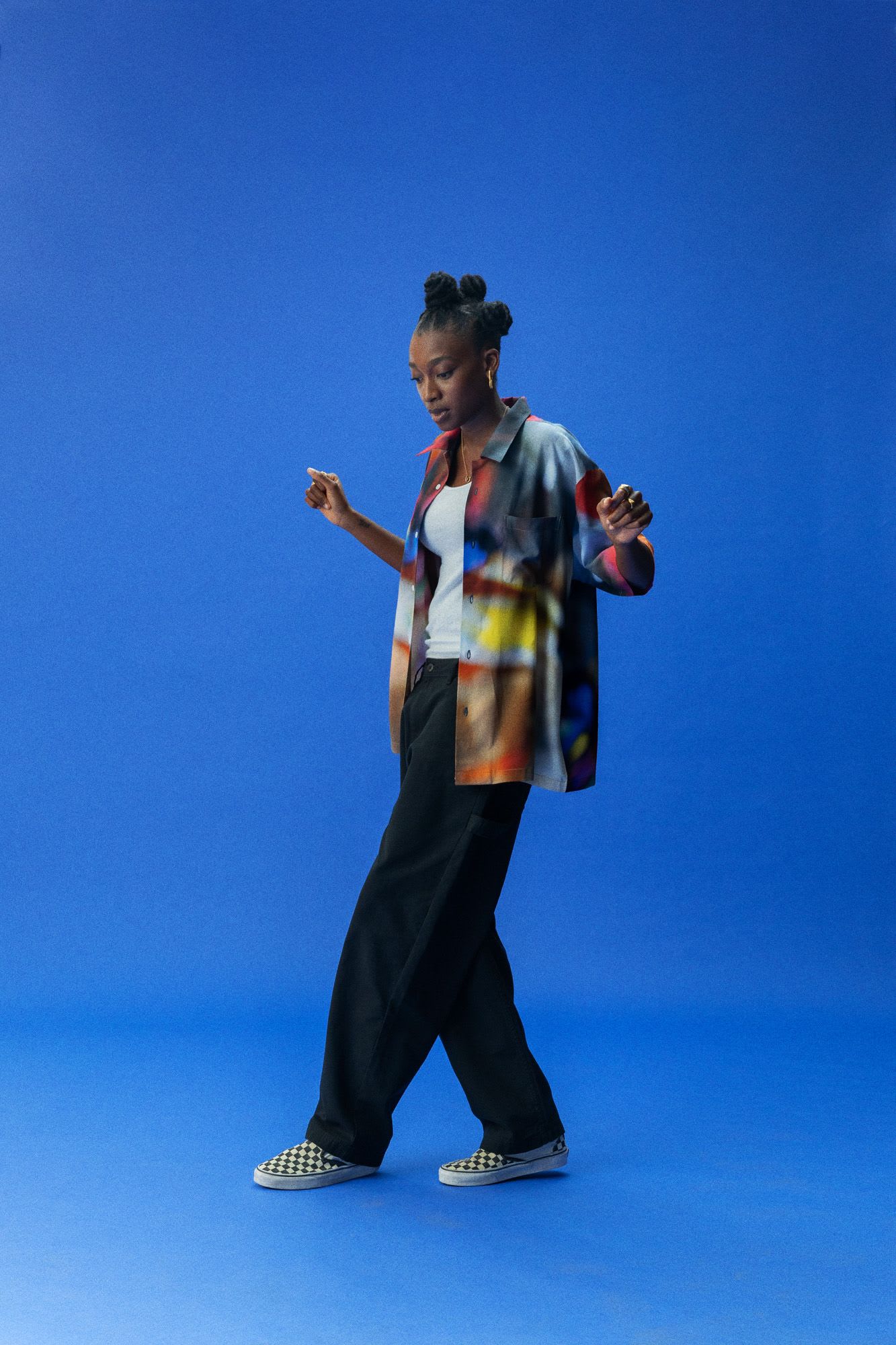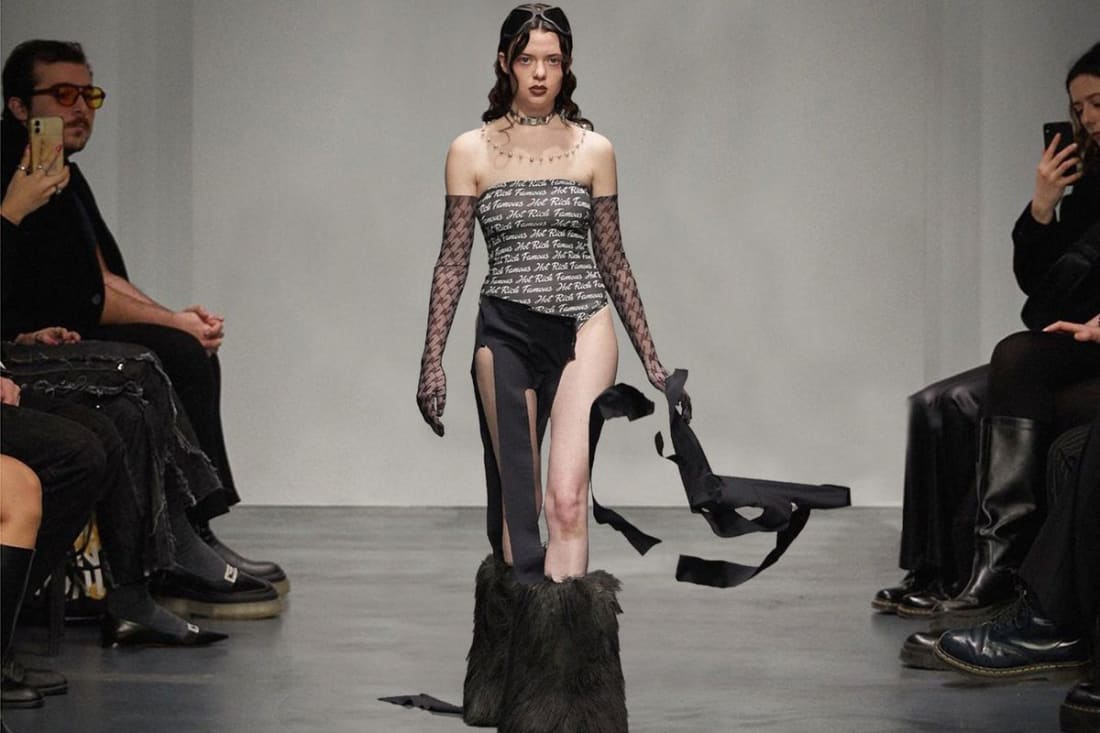How Mary Quant’s feel good fashion inspired a new youth culture
Plus more fashion news from Martine Rose, Stüssy and Little Simz
Plus more fashion news from Martine Rose, Stüssy and Little Simz
Greetings fashion lovers! It’s Friday once again which means we have lots of delicious fashion news for you. Strap in for Stüssy’s petrolhead Martine Rose collab that hit the road this week. Meanwhile, Little Simz fronts the latest Vans campaign, outdoors brand Berghaus launches its first high performance sports hijab and digital fashion platform SYKY announce its new fashion incubator for emerging digital designers. But first of all, we reflect on the vibrant legacy of Mary Quant, who passed away yesterday aged 93, and how her dopamine-boosting designs set the tone for decades of youth culture and fashion to come.
Mary Quant’s vivid designs took London from black and white to full colour

Before Mary Quant opened her iconic King’s Road boutique in 1955, teenagers were expected to dress much like their parents. While fringe subcultures had existed earlier in the 20th century, it wasn’t until the ‘60s that Quant helped cultivate youth culture as a widespread, commercial movement with its own distinct aesthetic.
Post-war London was, for the most part, pretty bleak. Rationing didn’t end until 1954, parts of London were still derelict bomb sites and conservative cultural values continued to proliferate. Fashion, too, reflected this subdued mood. It’s no wonder, then, that by 1955, kids who’d grown up in this atmosphere were looking for something new. And Quant’s dopamine boosting designs offered exactly that.
Her candy coloured dresses, PVC coats and subversive miniskirts gave young people the sartorial tools to establish their own identities, helping plant the seeds for the rich and varied youth culture we enjoy today. In pioneering the Swinging Sixties look, Quant put forward a nonconformist point of view that struck a chord with a new generation of women who didn’t want to feel restricted. She created comfy, practical clothes that made people feel good. Most of all, her designs made fashion fun, taking post-war London from black and white to full technicolour.
Though her first shop, Bazaar, originally sold wholesale fashion, Quant grew frustrated with the limited garments available and started stocking the boutique with her own innovative designs. One day’s sales would pay for the cloth that was then made into new stock overnight to be sold instore the next day. The shopping experience inside Bazaar mirrored this bustling, chaotic atmosphere. It was much less formal than other shops at the time with loud music, free drinks and opening hours that extended into the late evening.

But all this didn’t come without backlash. The miniskirt, which Quant is widely credited with inventing, but rather popularised, represented the rebellious spirit of the age, reflecting a period of growing sexual liberation thanks to the UK legalisation of the birth control pill from 1961. Consequently, shorter hemlines provoked disdain from conservative groups and major fashion houses alike. In 1966, a group of women known as the British Society for the Protection of Mini Skirts protested outside a Dior fashion show because the French brand refused to embrace the mini.
The cultural shift that Quant helped facilitate was all the more impactful because she created fashion for the masses – keep in mind that this was long before the era of fast fashion so clothes were made locally in London. In 1963, Mary Quant Limited launched a cheaper diffusion line, Ginger Group, to reach more of the young people she was designing for. It's estimated that by the end of the 1960s, up to seven million women had at least one of her garments in their wardrobe (the UK population was around 52 million, meaning that's about a third of British women!) Quant’s joyful fashion revolution was an indisputable success, disrupting the straitlaced status quo and changing the landscape of youth culture forever.
Stüssy’s Martine Rose collab shifts up a gear


We’ve never wanted a driving licence more than the moment we saw the campaign for Stüssy’s new collab with Martine Rose. The capsule collection has everything you could ever want to pimp your ride, from steering wheel covers, driving gloves and a scented air freshener to a co-branded mat set, fringed flag and a collaged windscreen. From motojackets to Jeremy Scott’s Hyundai collab, the engine has been well and truly revved up on motor fashion of late. But for those of us who don’t own a car, the capsule is rounded off with Stüssy t-shirts and hoodies. BRB, signing up for more driving lessons. Shop the collection here and in select stores.
Little Simz fronts Vans’ colourful, creative Off The Wall campaign

Vans has unveiled the new ambassadors for the colourful This Is Off The Wall campaign. Led by Brit award winner Little Simz, the group of fashion disruptors, musicians and professional athletes make up a clique we want to join. Seeking to celebrate self-discovery and creative expression, the campaign comes with the launch of the Vans Knu Skool sneaker, a ‘90s-inspired low top silhouette with a chunky skater shoe look. Get a closer look at the campaign here.
Berghaus launch their first sports hijab

There shouldn’t be any barriers to enjoying nature and making the most of the outdoors. That’s why outdoors brand Berghaus has released its first innovative performance sports hijab for Muslim women hikers. It’s made from a high-spec lightweight, breathable fabric to reduce overheating. Pins that fasten traditional hijabs can fall out or prick the skin during exercise so they were replaced with studs to achieve a comfortable, bespoke and secure fit. The hijab was developed in collaboration with Zahrah Mahmood, also known as the Hillwalking Hijabi, who says she hopes the Berghaus hijab will “make people feel included and valued, I hope Muslim women can feel confident, secure and ready for anything.” The sports hijab is available here for £25.
Syky announce fashion incubator for emerging digital designers
Digital fashion collective Syky is launching a talent incubator for 10 emerging digital designers. Fashion for the metaverse and Web3 is a rapidly emerging industry and the collective has already recruited experts from Calvin Klein, the British Fashion Council and Vogue to mentor designers. The year-long programme aims to help young designers build skills across fashion and technology, bridging the gap between virtual and physical realms. The first round of applications is already open and the 10 designers will be announced in early June.



